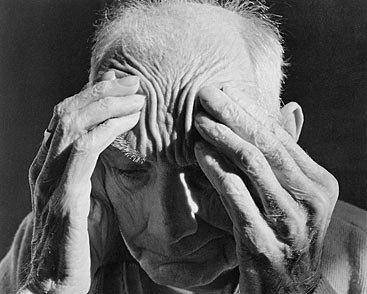
Born in 1947 in Détroit, Michigan (US)
Lives and works in Cambridge, Massachussets (US)

1984
Black and white photograph, gelatin-silver print
20 x 25 cm
Year of Purchase: 1991
Nicholas Nixon is a virtuoso when it comes to large-format cameras, the favourite medium of American photographers of the ‘Straight Photography’ school, who clustered around Alfred Stieglitz. He produces documentary-type series in which is expressed a powerful social involvement linked with an intimacy with the subject. In 1975 or thereabouts, he started to photograph architecture and landscapes (1976, exhibition at the MoMA with 40 photographs of Boston), which he quickly abandoned in favour of people. The Front Porch series, worked on between 1977 and 1982, was exhibited and published by the MoMA; it shows families in the southern states photographed on the porches of their homes, in that intermediate place between private and public, where connivence and violence in social relations become friends. This initial series triggered a work about closeness, the identity of bodies, family relations (The Brown Sisters, a series started in 1975, Family Pictures – pictures of the artist’s family -, etc.) age, time, and death (series on old age, Aids victims, handicapped persons…) in which Nixon tracks down the ephemeral beauty of the subject, the contacts and the marks left by the passage of time.
Despite the emotional content of his themes and the aesthetic sensitivity of the shot, the artist avoids facile sentimentalism, and mawkish clichés by keeping a quiet distance with his subject. The use of the age-old technique of the large-format camera dictates, through the length of the pose and the cumbersomeness of the tripod a certain distance from the events, and calls for the cooperation of the subjects being photographed. Through the rigorous sensuality of the composition, the descriptive and almost abstract clarity of the black and white, Nixon’s photographs reveal an understanding and thoughtful look at life. He creates images in which, fifty years later, we hear the idealism of Edward Weston and the intimate America of Walker Evans. Appearance here is given a psychological value which combines the aesthetic quality specific to photography and the iconography of death.
Maïté Vissault